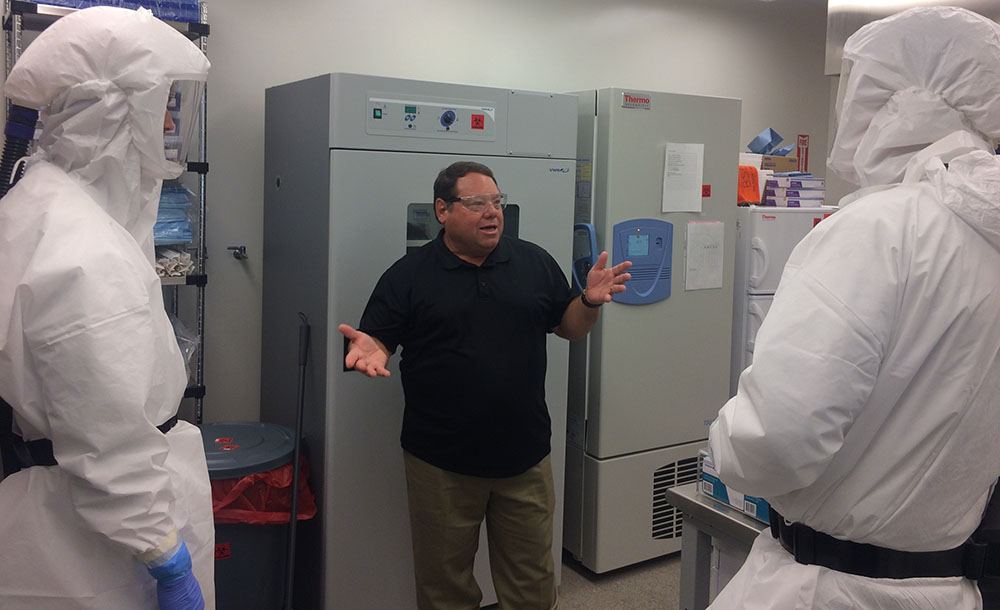Biosafety is an essential practice that ensures the safety of humans, animals, and the environment from biological risks. The Basic Principle of Biosafety is crucial in laboratories, healthcare facilities, and agricultural settings where biological agents are handled. This article will explore the foundational aspects of biosafety, its importance, the various levels of biosafety, and best practices to maintain a safe environment.
Understanding Biosafety
What is Biosafety?
Biosafety refers to the precautions taken to prevent exposure to infectious agents or toxins that may affect humans, animals, and the environment. It encompasses a range of practices, protocols, and regulations designed to protect laboratory workers, the community, and the ecosystem from harmful biological materials.
Importance of Biosafety
The importance of biosafety cannot be overstated. With the increasing use of biotechnology, genetic engineering, and microbial research, the potential for accidents or misuse of biological materials has grown. Effective biosafety measures are essential to prevent outbreaks of diseases, ensure public health, and protect biodiversity.
Basic Principles of Biosafety
The Basic Principle of Biosafety is built on several key concepts designed to minimize risks associated with handling biological materials. These principles are universally applicable across various settings, including laboratories, healthcare facilities, and agricultural environments.

1. Risk Assessment
Risk assessment is the first step in biosafety management. It involves evaluating the potential hazards associated with biological materials, determining the likelihood of exposure, and assessing the consequences of such exposure.
Key Steps in Risk Assessment
- Identifying Biological Hazards: Recognize all potential biological agents, including viruses, bacteria, fungi, and parasites, that may pose a risk.
- Evaluating Exposure Potential: Analyze how individuals may be exposed to these hazards (e.g., inhalation, ingestion, or skin contact).
- Assessing Consequences: Determine the potential health effects of exposure, including mild illness to severe disease or death.
Importance of Risk Assessment
Conducting a thorough risk assessment helps in developing effective biosafety protocols tailored to specific risks. It enables organizations to prioritize resources and focus on the most significant threats.
2. Containment
Containment refers to the methods used to prevent the escape of biological agents from the laboratory or facility where they are handled. The level of containment required depends on the risk level associated with the biological material.
Levels of Containment
Biosafety levels (BSL) are defined by the World Health Organization (WHO) and the Centers for Disease Control and Prevention (CDC). There are four primary biosafety levels:
- Biosafety Level 1 (BSL-1): Suitable for work with well-characterized agents not known to cause disease in healthy adults. Basic safety practices include handwashing and proper waste disposal.
- Biosafety Level 2 (BSL-2): Required for handling moderate-risk agents that can cause human disease but are not transmitted through the air. Additional precautions include the use of personal protective equipment (PPE) and restricted access to laboratory areas.
- Biosafety Level 3 (BSL-3): Necessary for work with agents that can cause serious or potentially lethal diseases through inhalation. This level includes more stringent containment measures, such as controlled access, ventilation systems, and specialized PPE.
- Biosafety Level 4 (BSL-4): The highest containment level for working with dangerous and exotic agents that pose a high risk of life-threatening disease. BSL-4 facilities require a completely isolated environment with specialized equipment and protocols.
3. Personal Protective Equipment (PPE)
Personal protective equipment (PPE) is essential in minimizing exposure to biological hazards. Proper use of PPE is a crucial aspect of the Basic Principle of Biosafety.
Types of PPE
- Gloves: Protect hands from direct contact with hazardous materials. Disposable gloves should be worn and changed frequently.
- Gowns and Lab Coats: Provide a barrier against contamination. Gowns should be fluid-resistant and worn over clothing.
- Masks and Respirators: Protect the respiratory system from inhaling infectious agents. The type of mask or respirator required depends on the biosafety level.
- Eye Protection: Safety goggles or face shields protect the eyes from splashes or aerosols.
Importance of PPE
Wearing appropriate PPE significantly reduces the risk of exposure to biological agents. Training in proper usage and disposal of PPE is vital to ensure maximum protection.
4. Hygiene Practices
Maintaining good hygiene practices is another fundamental principle of biosafety. Proper hygiene helps prevent the spread of biological agents and protects individuals working in labs and healthcare settings.
Key Hygiene Practices
- Hand Hygiene: Frequent handwashing with soap and water or using alcohol-based hand sanitizers is essential. Hands should be washed before and after handling biological materials.
- Decontamination: Regular cleaning and disinfection of surfaces and equipment are crucial. This includes using appropriate disinfectants that are effective against the biological agents being handled.
- Waste Disposal: Proper disposal of biohazardous waste, such as contaminated materials, sharps, and cultures, is essential to prevent accidental exposure.
5. Training and Education
Education and training play a vital role in ensuring that personnel understand biosafety protocols and the potential risks associated with biological materials.
Key Training Components
- Biosafety Regulations: Training should include an overview of relevant biosafety regulations, guidelines, and institutional policies.
- Proper Handling Techniques: Staff should be trained in safe laboratory practices, including proper use of equipment, PPE, and emergency procedures.
- Emergency Response: Training should include how to respond to accidents, spills, or exposure incidents effectively.
Importance of Training
Regular training ensures that all personnel are knowledgeable about biosafety practices and are prepared to respond to emergencies. It also fosters a culture of safety within the organization.
6. Incident Reporting and Response
Effective incident reporting and response systems are essential components of biosafety management. These systems ensure that any exposure or accident is documented and addressed promptly.
Key Elements of Incident Reporting
- Reporting Procedures: Clear procedures should be established for reporting incidents, including exposure to biological agents or spills.
- Investigation Protocols: Each incident should be thoroughly investigated to determine the cause and prevent future occurrences.
- Corrective Actions: Appropriate corrective actions should be implemented based on the investigation findings to improve safety measures.
Importance of Incident Reporting
A robust incident reporting system allows organizations to learn from mistakes and continuously improve biosafety practices. It helps identify trends and areas that require additional attention or resources.
Regulatory Frameworks and Guidelines
Biosafety practices are guided by various regulatory frameworks and guidelines established by national and international organizations. These frameworks provide essential standards for biosafety in research, healthcare, and agricultural settings.
1. World Health Organization (WHO)
The WHO provides comprehensive guidelines for biosafety in laboratories, emphasizing risk assessment, containment, and safety measures. These guidelines serve as a basis for developing national biosafety regulations.
2. Centers for Disease Control and Prevention (CDC)
The CDC outlines biosafety levels and best practices for handling infectious agents in research laboratories. The CDC’s guidelines focus on minimizing risks and protecting public health.
3. National Institutes of Health (NIH)
The NIH has established guidelines for research involving recombinant or synthetic nucleic acid molecules. These guidelines ensure that research is conducted safely and ethically while minimizing potential risks.
4. National Biosafety Guidelines
Many countries have established national biosafety guidelines to regulate the use of biological materials. These guidelines typically cover risk assessment, containment, and reporting requirements.
Challenges in Biosafety
Despite the established principles and guidelines, several challenges remain in implementing effective biosafety practices.
1. Lack of Awareness and Training
One of the most significant challenges is the lack of awareness and training among personnel handling biological materials. Inadequate training can lead to unsafe practices and increased risk of exposure.
2. Resource Limitations
Many organizations, especially smaller laboratories and clinics, may face resource limitations that hinder their ability to implement comprehensive biosafety measures. This includes inadequate funding for equipment, PPE, and training programs.
3. Evolving Biological Threats
The emergence of new pathogens and biological agents presents an ongoing challenge for biosafety management. Continuous updates to biosafety protocols are necessary to address these evolving threats effectively.
4. Compliance and Regulation Enforcement
Ensuring compliance with biosafety regulations can be challenging. Organizations must prioritize biosafety and allocate resources to maintain compliance with established guidelines.
Conclusion
The Basic Principle of Biosafety encompasses a range of practices designed to protect humans, animals, and the environment from biological risks. By focusing on risk assessment, containment, personal protective equipment, hygiene practices, training, and incident reporting, organizations can effectively minimize the potential for exposure to harmful biological agents. As the field of biosafety continues to evolve, ongoing education and adherence to regulatory guidelines will remain essential in promoting a safe and healthy environment for all.













